ANSI/NIRMA CM 1.0 Revision
advertisement
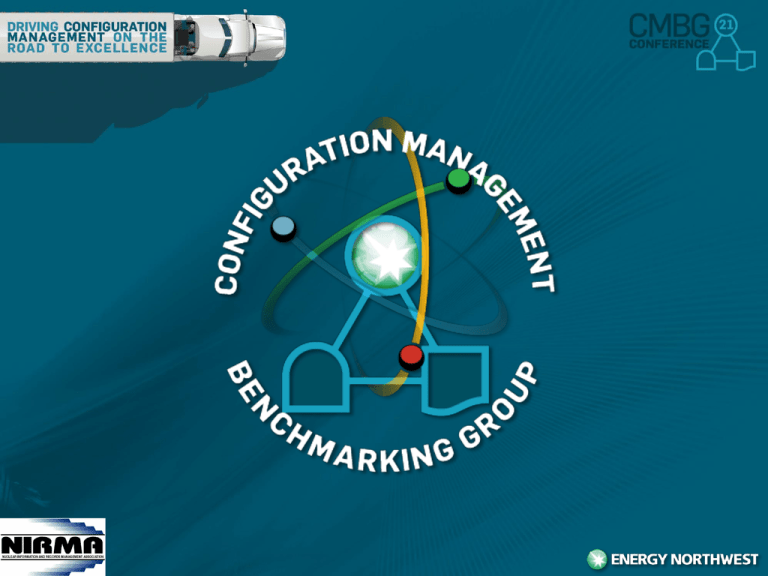
1 ANSI/NIRMA Standard CM 1.0 The Rear View Mirror and What’s Ahead 2 Evolution of ANSI/NIRMA Standard • Response to Industry-Recognized Issues • NIRMA Position Papers • Millstone Event • NIRMA TG-19 • History of ANSI/NIRMA Standard 3 Response to Industry Issues • In mid-1980s, NRC initiated Safety System Functional Inspections (SSFIs) based on events/findings such as: IE 79-14 => Piping & structural analysis issues with plant installations GL 83-28 =>ATWS at Salem Plant – Rector Trip Switchgear NUREG-1154 => Davis Besse Loss of all Feedwater • Basic objective of SSFIs was to ensure Licensee could produce documentation that: 4 Represented the ‘as-built’ facility Verified the facility was within the authorized design basis Supported the ability to maintain the plant Demonstrated proper controls are applied for facility changes Results of SSFIs • Identified Major Issues, e.g.: Plant changes not documented Design documents: o Didn’t reflect the ‘as-built’ plant o Not readily retrievable by system or component o Updates of changes not incorporated into all affected documents Vendor technical information: o Not related to applicable components o Vendor manuals not retrievable o Vendor bulletins not incorporated into applicable procedures • Raised concerns on Licensee’s ability to confirm as-built plant was in compliance with its design and licensing bases 5 Industry Reactions • NRC required Licensees provide evidence that plants were within their design and licensing bases • Utilities committed to reconstituting their design basis for operating units, i.e., Design Basis Reconstitution • New plants under construction also committed to developing design basis documentation • NUMARC Task Force published guidance for Design Basis Reconstitution (NUMARC 90-02) • NRC issued NUREG/CR 5147 on CM Program attributes • Design Basis Reconstitution initiatives were launched with expenditures in the $100s of Millions of Dollars…! 6 NIRMA’s Assessment & Actions Taken • NIRMA noted that non-adherence to design change control impact analysis requirements of ANSI N42.11 (QA for Design Control) was a major cause of design basis issues BUT design control was not CM… • Proposed that key underlying issues were ineffective processes, information management and integration of information flows in work processes across the entire plant organization • Suggested overall issue was absence of Configuration Management Programs which complimented design and document control • NIRMA Configuration Management Committee (CMC) was formed in 1987 to focus on the issues and develop guidance materials for establishing effective CM Programs 7 NIRMA Direction Taken on CM • CMC focused on a Position Paper on CM for nuclear plants: Engaged experienced multi-disciplined team including: o Engineering, Design, Quality Assurance, Procurement o Operations, IT, Document Control & Records Management Took holistic approach to CM, i.e., beyond design and design basis Focused on information management, business processes and governing changes of related information and flows (i.e., impact analyses) Applied CM principles used in Dept. of Defense CM Programs to nuclear plants, i.e., baseline, change control, status accounting and verification / validation (or audit) Translated these principles into core elements of a CM Program NIRMA Position Paper PP-02, Rev. 0 was issued in 1989 8 NIRMA Continued CM-Related Efforts • CMC identified need for business process improvements: Interfaces of multiple processes not well-defined Isolated processes were used to achieve specific tasks Focused on multiple ways changes could be implemented and ability to perform true impact analyses for each type of change Position Paper PP-03 issued on CM Enhancement Programs • CMC recognized information management not an industry strength with limited importance by management: Multiple islands of data existed in individual silos – “My Data” After plant changes, not all duplicated instances of data were updated Position Paper PP-04 issued on Configuration Management Information Systems 9 Coordination with DOE on CM • DOE developed CM Program guidance and directives in DOE Order 1073 issued in 1993: Adopted many of the core elements and principles in NIRMA PP-02 Expanded to provide detailed guidance for DOE facilities NIRMA CMC and DOE collaborated to incorporate applicable guidance from DOE Order 1073 into PP-02 NIRMA PP-02, Rev. 1 was issued in 1994 NIRMA and DOE also collaborated on development of NIRMA TG-19 which was the foundation document for the initial ANSI/NIRMA Standard CM 1.0 issued in 2000 10 Events Driving CM Program Progress • 1994 – CM Practitioners hosted by PP&L: Discussed current CM issues and practices NIRMA, as an approved ANSI Standards Developer, suggested an industry standard on CM should be considered • 1995 – CMBG established • 1996 – Millstone Shutdown: NRC’s 10CFR50.54(f) letter issued with major focus on CM Triggered industry initiatives on CM • 1996 – NIRMA engaged with CMBG to pursue industry standard: Began developed of NIRMA Technical Guideline TG-19 Birth of the 3-Ball Model…! 11 ANSI/NIRMA Standard History • 1988- NIRMA certified as an ANSI Approved Standard Developer • 1998 - NIRMA TG-19 was issued: Reflected CM Principles for Commercial Nuclear Power and DOE Facilities Became the base document for development of the desired ANSI/NIRMA industry standard for Configuration Management • 2000 – ANSI/NIRMA Standard CM 1.0 issued: An industry consensus standard involving review and balloting by industry representatives of multiple interest groups within the nuclear industry, e.g.: o NSSS vendors, A/E Firms and DOE Contractors o Nuclear Insurers, Industry organizations and Independent industry experts o Nuclear utilities and nuclear facilities’ operators The Standard provides a CM Program framework against which individual nuclear facility organizations can benchmark their respective CM Programs 12 ANSI/NIRMA Standard Follow-on Activities • 2005: Reference INPO AP-929 - Configuration Management Process Description: CMBG requested revisions for INPO AP-929 Wanted consistency with ANSI/NIRMA Standard CM 1.0 INPO issued Rev. 1 2007: ANSI/NIRMA Standard CM 1.0 revised to incorporate: Industry lessons learned since initial issuance in 2000 CM Process Model Equilibrium Restoration Concepts and Guidance Continued monitoring of evolving industry issues through CMBG 13 Summary of History 1987 1989 1993 1994 ANSI/NIRMA Std. 14 2007 2011 Rev. 1 1994 Rev. 0 1996 TG-19 CMBG 2000 Rev. 0 1989 PP-02 NIRMA 1996 CM 1.0 2000 CM 1.0 2007 Configuration Management Committee/Programs Business Unit Configuration Management Benchmarking Group 2014 The Windshield View What Lies Ahead for the ANSI/NIRMA Standard CM 1.0 15 ANSI/NIRMA CM Standard - Going Forward • 2007 revision was assessed regarding needed updates: CMBG agreed no updates were required at this time Any issues going forward would be addressed in later revision • NIRMA decision is to reaffirm 2007 revision: Administrative processes required by ANSI for Reaffirmation Anticipated issuance of 2014 revision in Q3 No material changes to the content – only revised Foreword describing basis for reaffirmation • Industry inputs for updates will be collected over next few years for next revision in 2018 or 2019…! 16 CMBG Inputs and Support • Steering Committee has agreed topics for consideration of new content of ANSI/NIRMA Standard will be requested of CMBG members and addressed by Task Teams: Breakout sessions at CMBG Conferences to be leveraged for inputs Issues will be defined & research conducted by Teams Recommendations provided to NIRMA for next update • CMBG will be a voting member for all ANSI/NIRMA balloting : ANSI requires voting from diversified “interest categories” Process is required to achieve the industry consensus for standards CMBG represents “Industry Interest Group” category • Inputs from CMBG members to start in Breakout session today! 17 CM Guidance for New Nuclear Plant Projects 18 CM for New Nuclear Plant Projects • Focus of ANSI/NIRMA Standard CM 1.0 is on operating plants • New nuclear plant projects have unique CM issues that don’t exist for operating units today, e.g.: 10CFR52 licensing process & issuance of combined operating license (COL) that covers construction, commissioning and operation CM expected to be implemented during the construction phase of a project rather than simply after Turnover to owner operator Developing CM-oriented relationships to support impact analyses are being pursued to enhance information turnover to owner operators: o EPRI PIM initiative designed to establish common terminology to support automated transfers of information during new plant project lifecycle o NIRMA developing Information Handover and Turnover guidance materials to support CM Programs for new operating plants 19 Industry Guidance - New Nuclear Plants • EPRI addressed CM for New Nuclear Plant Projects: EPRI Technical Report 1022684, April 2011 – “Elements of PreOperational and Operational Configuration Management for a New Nuclear Facility” Guidance addresses all aspects of CM: o Emphasizes need to address CM early and establish roles and responsibilities o Focus on Licensee’s CM obligations, expectations of EPC and information flows during multiple phases of a project • EPRI & NIRMA agreed nuclear new build guidance in ERPI Technical Report was adequate at this time • Need for new industry standard for CM for new nuclear plant projects will be determined as new build initiatives evolve 20 Thank You…! 21
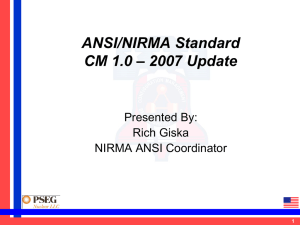

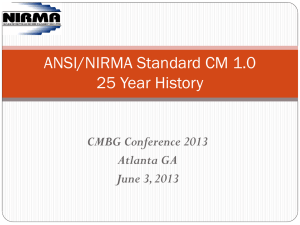
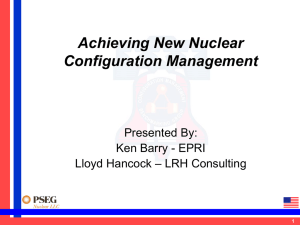
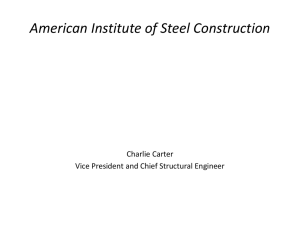
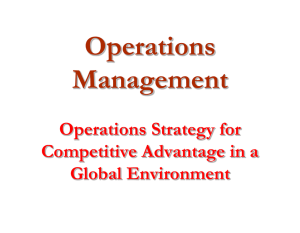




![The Politics of Protest [week 3]](http://s2.studylib.net/store/data/005229111_1-9491ac8e8d24cc184a2c9020ba192c97-300x300.png)